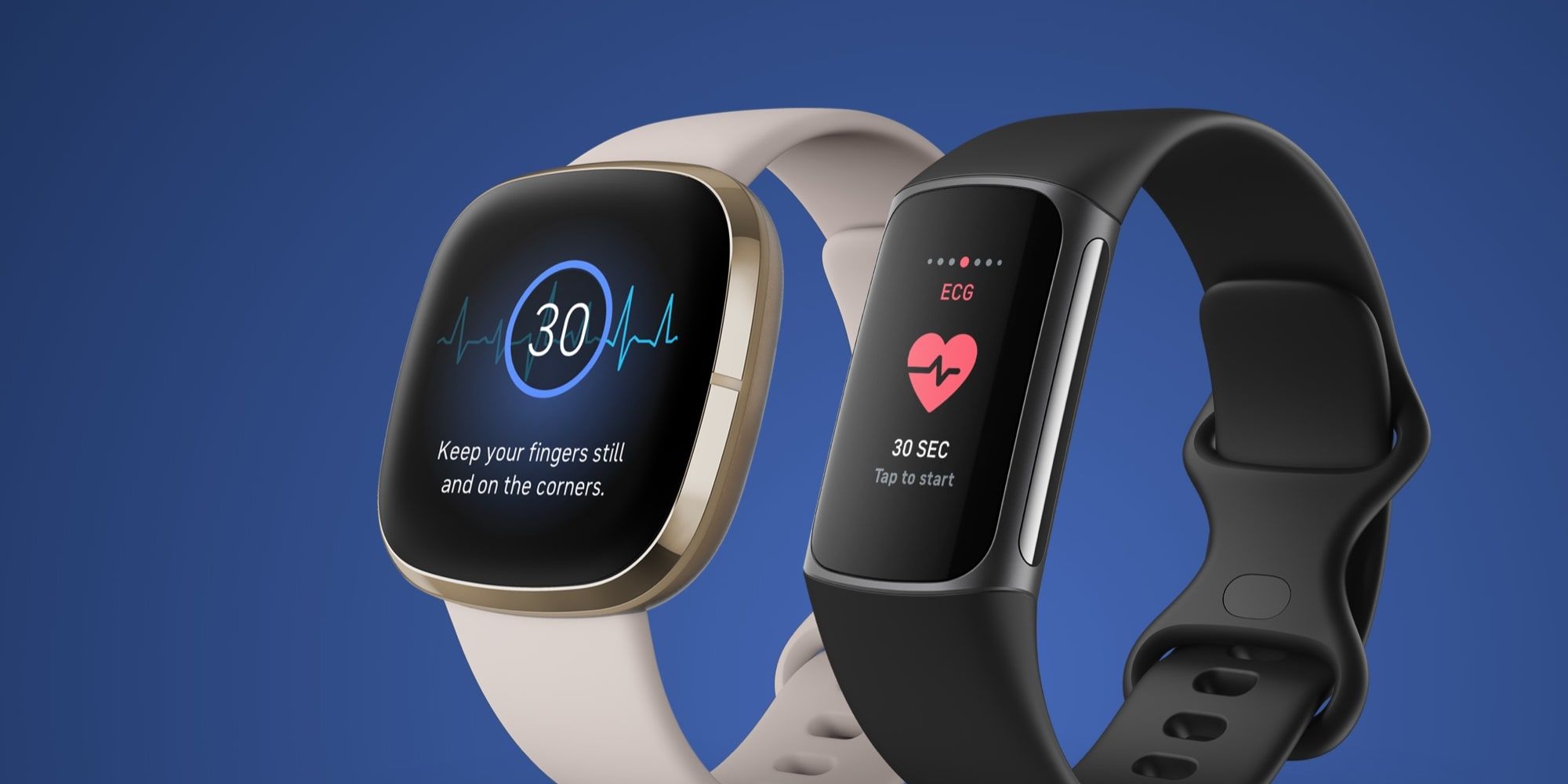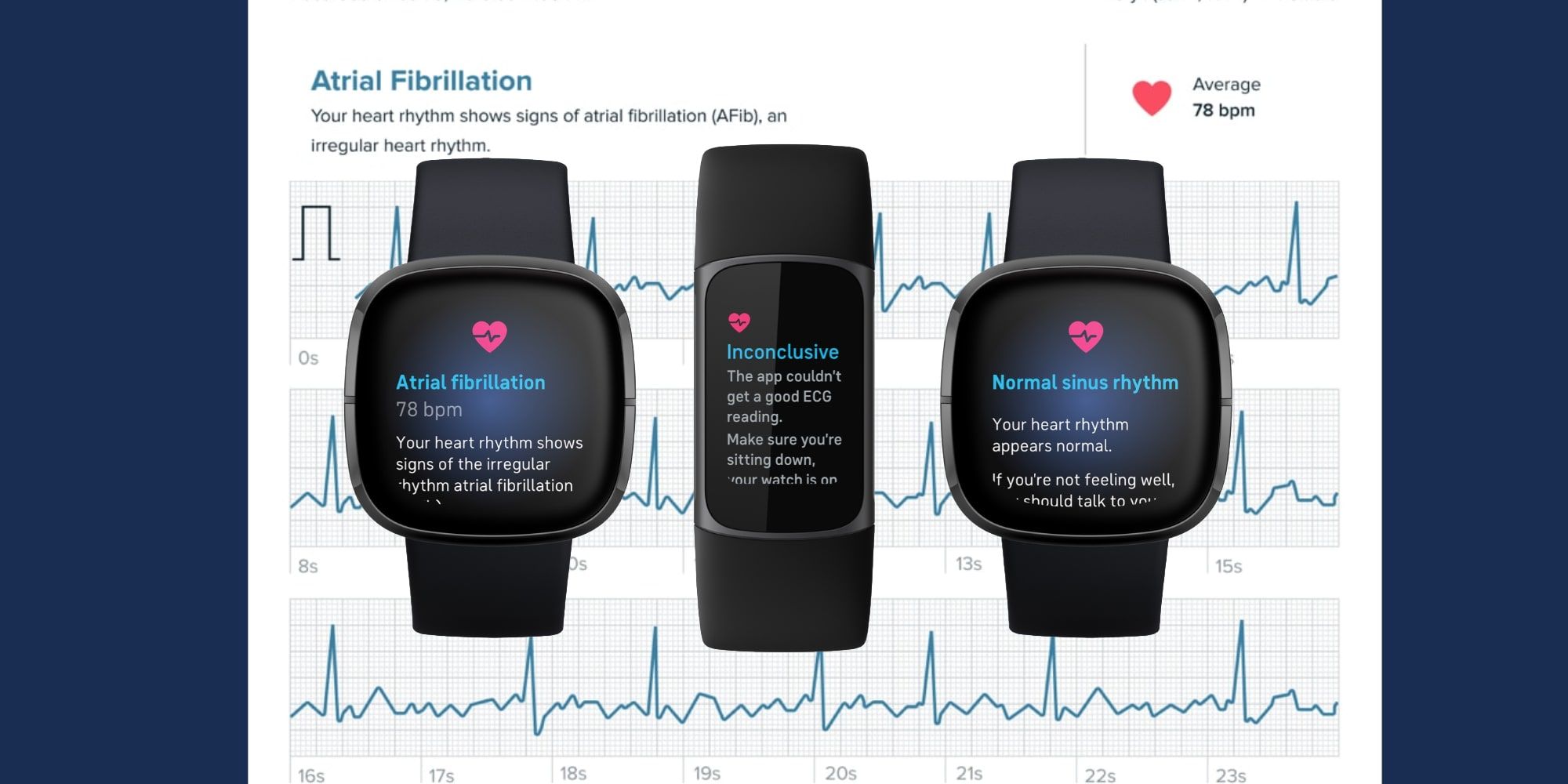Google's latest fitness tracker, the Fitbit Charge 5, has the ability to record an ECG, just like its more expensive sibling, the Fitbit Sense. This important feature can help to diagnose health problems and is a relatively new capability for wearables. Since some users of these devices might not be familiar with what an ECG is and how to capture a reading with a Fitbit, an exploration of how it works could prove useful.
Fitbit announced its most advanced smartwatch, the Fitbit Sense in 2020, its first model to include electrocardiogram (ECG) capability, matching a similar feature first introduced by Apple with its Apple Watch Series 4 in 2018, and then followed by Samsung in 2019 with its Galaxy Watch Active 2. It is still a very rare feature for smartwatches and virtually unheard of in fitness trackers. With the arrival of the Fitbit Charge 5, the cost of recording an ECG at a moment's notice plunged to just $179. While not used often, this could prove to be a life-saving feature for anyone that has heart problems, whether known or thus far undetected.
The method used to record an ECG with a Fitbit Charge 5 and a Fitbit Sense is the same. To begin, sit in a relaxed position and then open the ECG app. The app will show instructions on the display, guiding the wearer to place their index finger and thumb on either the corners or the sides of their Fitbit device. A countdown will appear and the user should wait until it reaches zero before moving. After the recording is complete, the results will appear, and swiping up will show a more detailed report. For most, the report will show 'Normal sinus rhythm,' which indicates heart activity appears to be normal. If 'Atrial fibrillation' is displayed then it means that the wearer's heart rhythm shows signs of a potential problem and Fitbit recommends contacting a doctor for more information. If 'Inconclusive' is shown, the app failed to collect a good reading, possibly due to an improper fit of the wristband or another reason.
Fitbit ECG Troubleshooting
In most cases, the Fitbit ECG app for the Charge 5 tracker and Sense smartwatch should work reliably. However, there are some things to check if the app can't be found or if it doesn't work as expected. If it can't be found, it might not be installed yet, which is easy to correct by downloading from the Fitbit App Gallery. If the app won't record an ECG, the Fitbit wristband might need to be adjusted. There should be enough room for comfort but generally feel snug. The ideal placement is about a finger's width above the wrist bone.
If an inconclusive result appears and the wristband position and tension seem correct, it might also mean the heart rate was too low or too high, which can be affected by exercise, nervousness, stress, infections, and some medications. When dehydrated or after drinking alcohol, the ECG might also fail, giving an inconclusive result. The Fitbit Sense smartwatch and new Fitbit Charge 5 tracker are some of the few wearables to include an ECG app and could help detect a potentially dangerous atrial fibrillation.
Source: Fitbit


